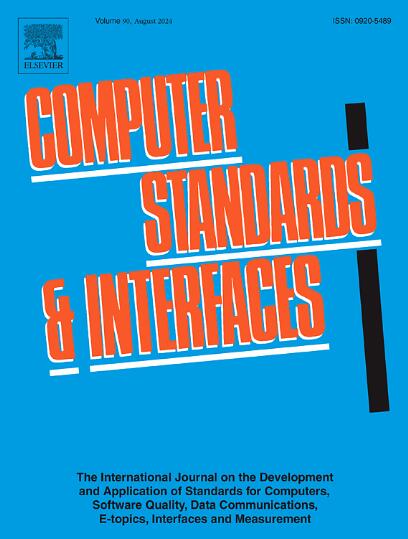A hybrid coot based CNN model for thyroid cancer detection
IF 3.1
2区 计算机科学
Q1 COMPUTER SCIENCE, HARDWARE & ARCHITECTURE
引用次数: 0
Abstract
Thyroid cancer is one of the most common endocrine malignancies, and early diagnosis is crucial for effective treatment. Fine-needle aspiration biopsy (FNAB) is widely used for diagnosis, but its accuracy depends on expert interpretation, which can be subjective. Recent advances in deep learning, particularly Convolutional Neural Networks (CNNs), have shown promise in automating and improving diagnostic accuracy from biopsy images. However, optimizing CNN architectures remains a challenge, as selecting the best layer parameters significantly impacts performance. Traditional approaches for selecting optimal CNN parameters often depend on exhaustive trial-and-error methods, which are computationally expensive and do not always yield globally optimal solutions. This process is both time-consuming and does not guarantee the precise attainment of an optimal CNN model. In this study, a novel approach is introduced to optimize CNN parameters by utilizing the COOT Metaheuristic Optimization Algorithm, proposing a new model named COOT-CNN for thyroid cancer detection. The COOT algorithm, formulated in 2021 and inspired by the behavioral optimization of waterfowl, is employed in this research to determine the optimal layers and parameters of the CNN model for thyroid cancer diagnosis. This method facilitates efficient optimization of layer parameters through a well-designed coding scheme. The model’s efficacy is assessed using thyroid fine needle aspiration biopsy data, categorized into two classes. Performance of the proposed approach is evaluated by comparing it with traditional CNN, Particle Swarm Optimization-based CNN model (PSO![]() CNN), and Gray Wolf Optimization-based CNN model (GWO
CNN), and Gray Wolf Optimization-based CNN model (GWO![]() CNN). The proposed model was found to achieve higher accuracy compared to conventional CNN, PSO
CNN). The proposed model was found to achieve higher accuracy compared to conventional CNN, PSO![]() CNN, and GWO
CNN, and GWO![]() CNN models.
CNN models.
一种基于杂交白骨的甲状腺癌检测CNN模型
甲状腺癌是最常见的内分泌恶性肿瘤之一,早期诊断对有效治疗至关重要。细针穿刺活检(FNAB)广泛用于诊断,但其准确性取决于专家的解释,这可能是主观的。深度学习的最新进展,特别是卷积神经网络(cnn),在自动化和提高活检图像诊断准确性方面显示出了希望。然而,优化CNN架构仍然是一个挑战,因为选择最佳的层参数会显著影响性能。选择最优CNN参数的传统方法通常依赖于穷举试错法,这种方法计算成本高,并且并不总是产生全局最优解。这个过程既耗时又不能保证精确地获得最优的CNN模型。本研究引入了一种利用COOT元启发式优化算法优化CNN参数的新方法,提出了一种新的甲状腺癌检测模型COOT-CNN。本研究采用受水禽行为优化启发,于2021年提出的COOT算法,确定甲状腺癌诊断CNN模型的最优层数和参数。该方法通过精心设计的编码方案,实现了层参数的高效优化。该模型的疗效评估使用甲状腺细针穿刺活检数据,分为两类。通过与传统CNN、基于粒子群优化的CNN模型(PSOCNN)和基于灰狼优化的CNN模型(GWOCNN)进行比较,评价了该方法的性能。与传统的CNN、PSOCNN和GWOCNN模型相比,该模型具有更高的精度。
本文章由计算机程序翻译,如有差异,请以英文原文为准。
求助全文
约1分钟内获得全文
求助全文
来源期刊

Computer Standards & Interfaces
工程技术-计算机:软件工程
CiteScore
11.90
自引率
16.00%
发文量
67
审稿时长
6 months
期刊介绍:
The quality of software, well-defined interfaces (hardware and software), the process of digitalisation, and accepted standards in these fields are essential for building and exploiting complex computing, communication, multimedia and measuring systems. Standards can simplify the design and construction of individual hardware and software components and help to ensure satisfactory interworking.
Computer Standards & Interfaces is an international journal dealing specifically with these topics.
The journal
• Provides information about activities and progress on the definition of computer standards, software quality, interfaces and methods, at national, European and international levels
• Publishes critical comments on standards and standards activities
• Disseminates user''s experiences and case studies in the application and exploitation of established or emerging standards, interfaces and methods
• Offers a forum for discussion on actual projects, standards, interfaces and methods by recognised experts
• Stimulates relevant research by providing a specialised refereed medium.
 求助内容:
求助内容: 应助结果提醒方式:
应助结果提醒方式:


